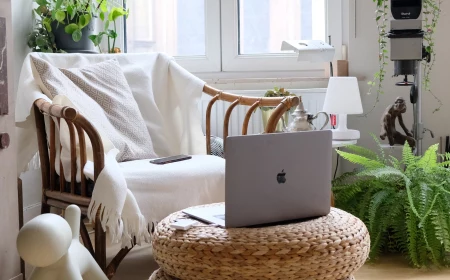Your Suede Couch Isn’t Ruined: A Real-World Guide to Cleaning and Care
Over the years, I’ve seen it all in the world of upholstery care. But honestly, nothing compares to the sheer panic in someone’s voice when they call about a fresh stain on their beautiful suede couch. There’s this instant feeling of regret, a fear that their gorgeous investment is ruined for good.
In this article
My first piece of advice is always the same: take a deep breath. A suede couch isn’t some delicate flower waiting to wilt. It’s a surprisingly durable piece of furniture that, with the right know-how, can look incredible for years. It just needs a different kind of TLC than your average fabric sofa.
The biggest mistake I see people make is grabbing a generic, all-purpose cleaner from under the sink. That’s a one-way ticket to a stiff, discolored, or permanently damaged couch. This guide is all about sharing the professional methods I’ve picked up from hands-on work—the stuff that actually works. We’ll get into the materials, the tools, and the techniques to handle everything from daily upkeep to those “oh no” moments. Let’s learn how to protect that beautiful couch.
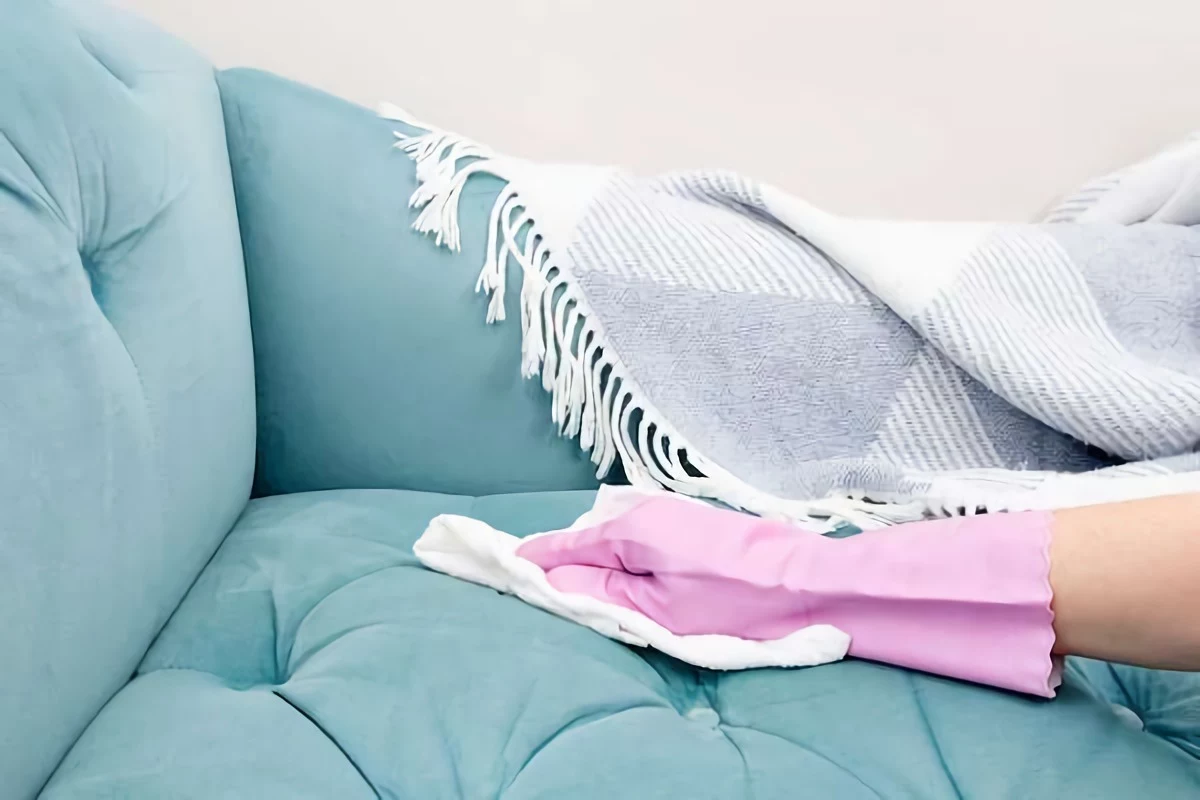
First Things First: What Kind of Suede Do You Have?
Before you even think about cleaning, you have to know what you’re working with. Getting this wrong is the most common and costly mistake, period. Suede isn’t just one thing; the term covers two very different materials that need completely different care.
The Cleaning Code: Your Couch’s Rulebook
Somewhere on your couch, probably tucked under a cushion or on the frame, is a little tag. This is your holy grail. It has a cleaning code that you absolutely must follow. Ignoring it is like ignoring a “Wet Paint” sign—you’re going to make a mess.
- W: Water-based cleaners are good to go. You’ll usually find this on synthetic microsuedes.
- S: Solvents only. Water is the enemy here and will likely cause stains and stiffness. This is the standard for most natural suede.
- W/S: You can use both water and solvent-based cleaners. Even so, I always recommend starting with the gentlest method first.
- X: Absolutely no liquids. Cleaning is strictly limited to vacuuming and brushing. This one is rare, but you need to take it seriously.
Can’t find the tag? You have to play it safe. Assume it’s an ‘S’ or ‘X’ code material until you can prove otherwise by testing a hidden spot. The risk of ruining it is just too high to guess.
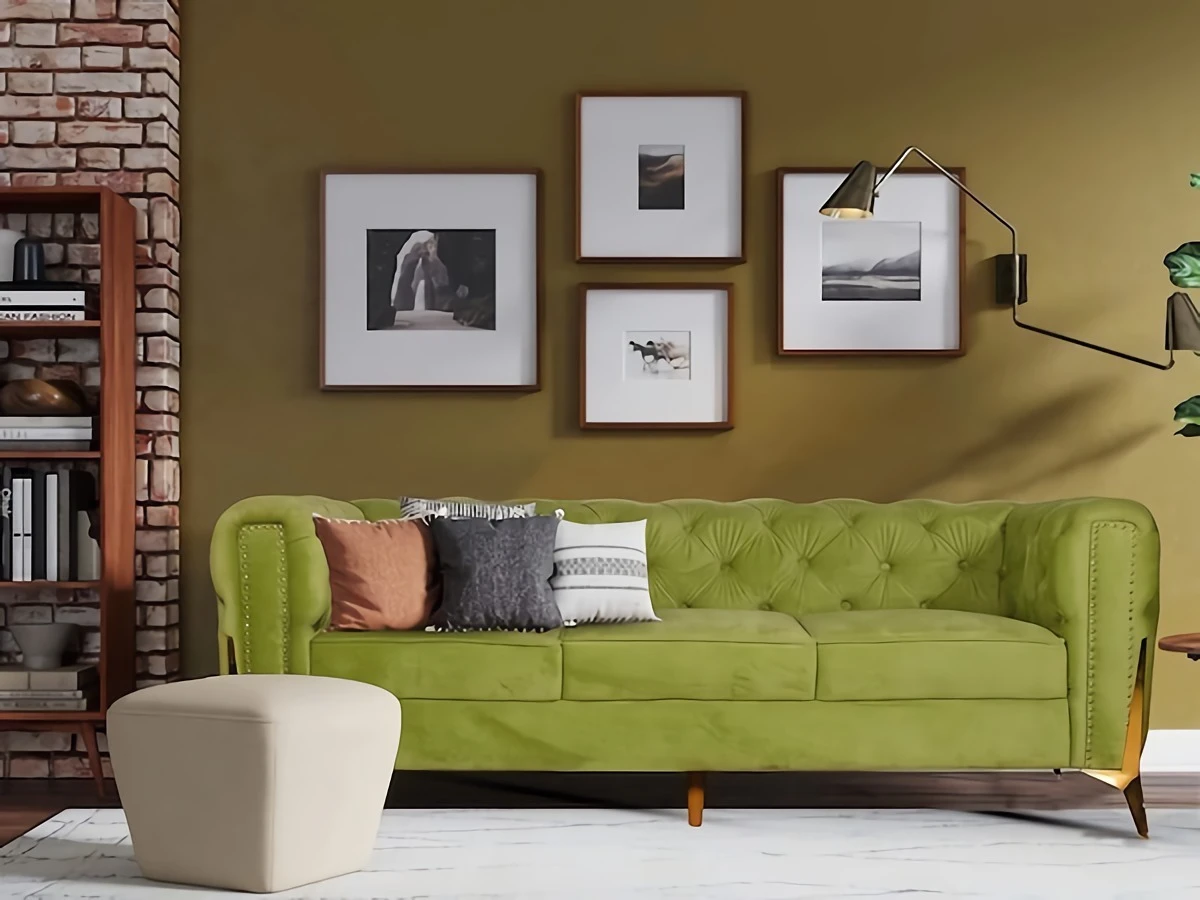
Natural Suede vs. Microsuede
Okay, so let’s break down the two main players. True natural suede is the real deal, made from the soft underside of an animal hide. The process creates a “nap,” which is just a fancy word for all those fine, velvety fibers that feel so good. Because these fibers are porous, natural suede is like a sponge for liquids and oils. This is why it usually has an ‘S’ cleaning code—it needs a cleaner (a solvent) that evaporates lightning-fast without messing with the leather’s natural oils.
On the other hand, microsuede (or faux suede) is a man-made wonder. It’s typically a high-tech polyester fabric designed to mimic the look and feel of real suede but with way more durability. The fibers are non-absorbent, so spills tend to bead up on the surface, giving you a precious window of time to blot them away. This is why most microsuedes have a ‘W’ or ‘W/S’ code. You can use water-based solutions because you aren’t dealing with delicate natural oils. It’s a fantastic, family-friendly alternative, though it can be a magnet for pet hair due to static.

Your Suede-Saving Toolkit: What to Buy and What to Expect
Having the right tools is half the battle. Seriously, put down that kitchen sponge. Investing a little bit upfront will save you a massive headache later. This is the kit I recommend to all my clients, and it’s a project you can pull together for about $30-$50.
- A Good Vacuum with Attachments. You need a soft brush head and a crevice tool. Heads up! Never, ever use the main rotating beater bar on your vacuum. It’s way too aggressive and will chew up the suede’s nap in a heartbeat.
- Suede Brush & Eraser Kit. This is non-negotiable. You can find a great kit on Amazon or at most shoe repair shops for about $10-$15. The brush has soft bristles for fluffing the nap, and the rubbery eraser block is a miracle worker for lifting out dirt and scuffs.
- White, Lint-Free Microfiber Cloths. Always use white cloths. I’ve seen colored cloths bleed their dye onto a couch, and it’s a nightmare to fix. A pack of these costs around $10 at any big-box store.
- 99% Isopropyl Alcohol. For ‘S’ code couches, this is your secret weapon. You can grab a bottle for about $5-$8 at a hardware store or online. Don’t use the 70% stuff from the pharmacy; its higher water content can cause the very stains you’re trying to avoid.
- Distilled Water. For ‘W’ code couches, always use distilled water (about $1 a gallon). Tap water contains minerals that can leave ugly white rings when they dry.
- A Little Bit of Clear Soap. For ‘W’ code cleaning, a few drops of a simple, clear dish soap (like original blue Dawn) or a dedicated upholstery shampoo will do.
- Cornstarch. The ultimate first responder for fresh grease stains. You probably already have it in your pantry.
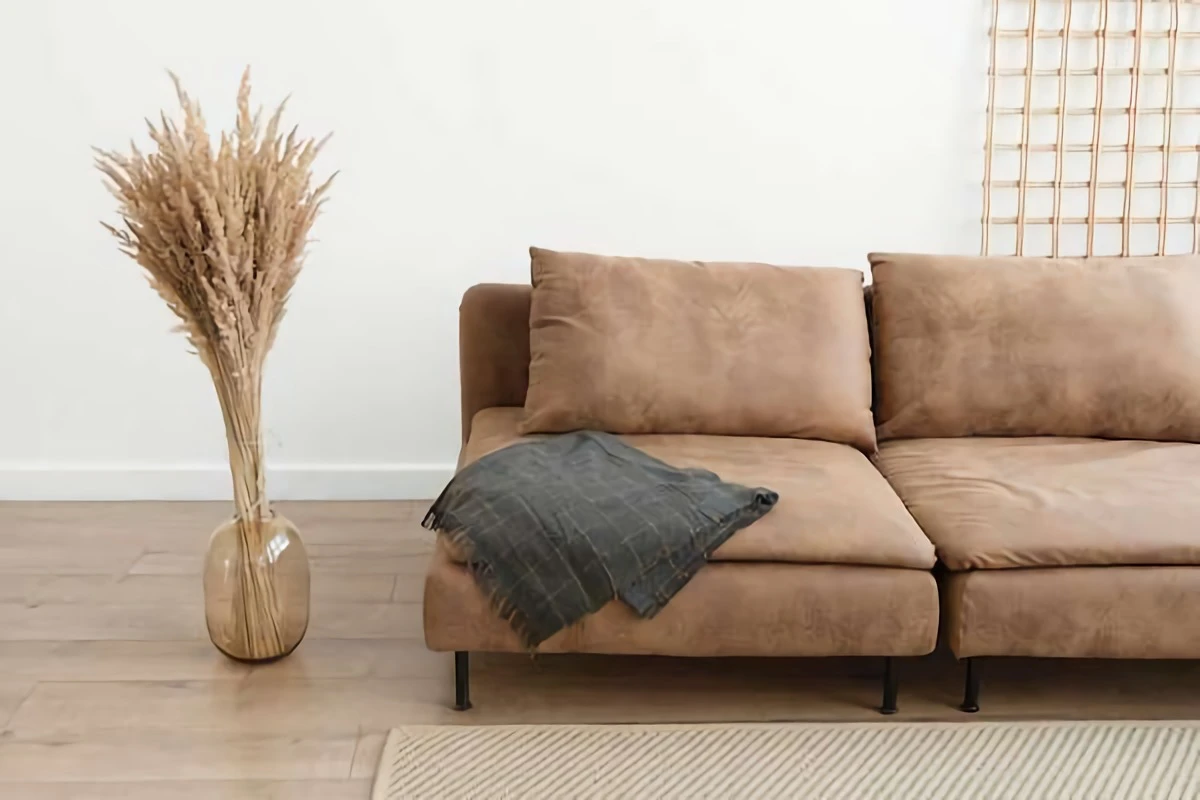
Routine Care: The Secret to a Long-Lasting Couch
The best way to keep your suede looking amazing isn’t frantic stain removal; it’s consistent, gentle maintenance. This simple routine prevents the buildup of dirt and oils that become major problems later.
Once a Week: Give the whole couch a light brushing with your suede brush. Use gentle, overlapping strokes in a few different directions. This lifts the nap, keeping it soft, and loosens all the surface dust and crumbs before they get ground in.
Once a Month: Time for a deep vacuum. Pull off all the cushions and use that crevice tool to get into all the seams. Then, use the soft brush attachment to vacuum every surface in a cross-hatch pattern—go one way, then the other. It pulls out so much more dirt.
Quick tip for pet hair: Before you vacuum, put on a pair of rubber dishwashing gloves and just wipe your hands over the couch. The static electricity makes the hair ball up into clumps you can easily pick off. It’s amazing how well this works!
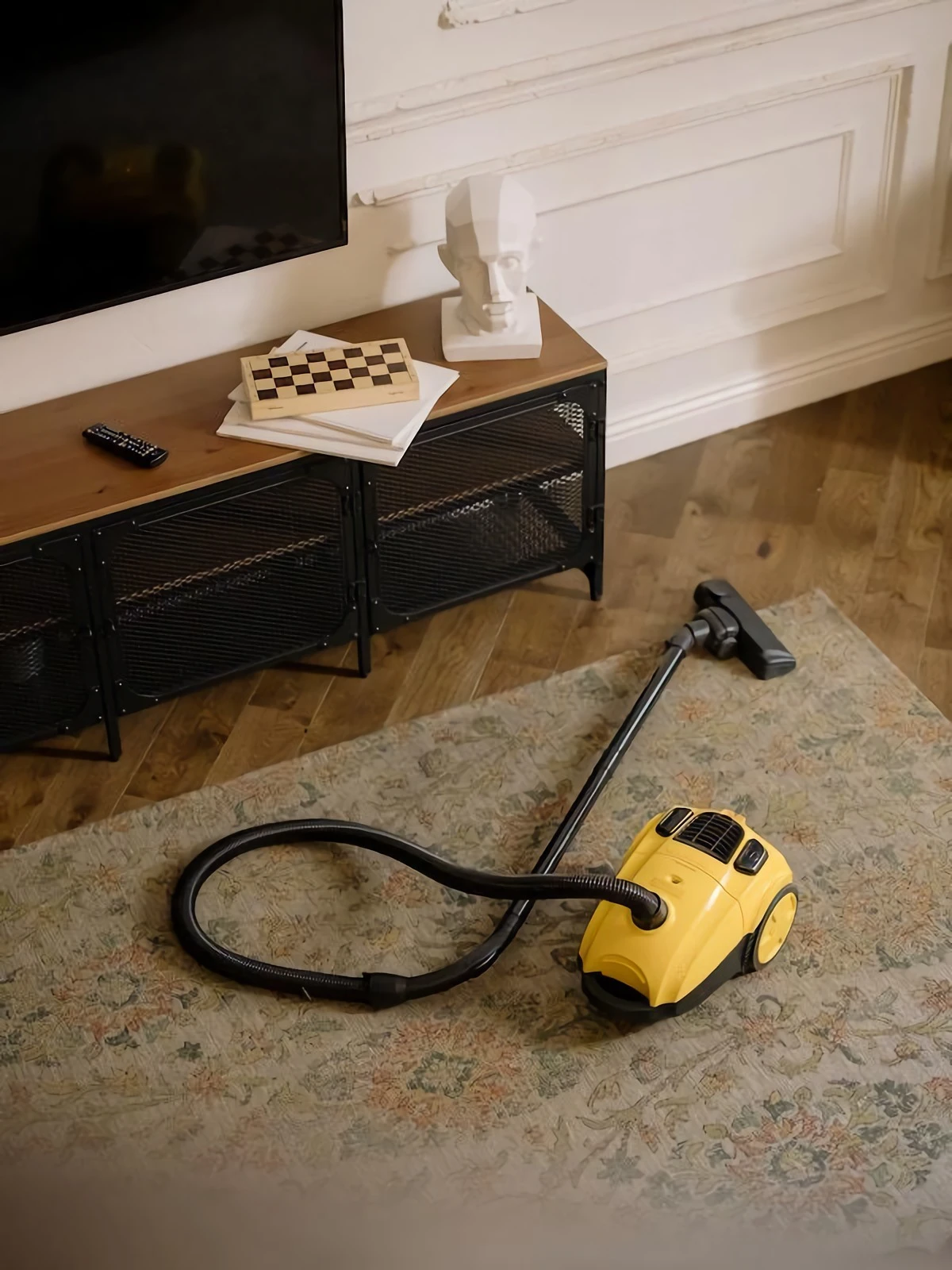
Seasonally (For Natural Suede Only): Every few months, consider using a specialized suede conditioner. Think of it like moisturizer for your skin. These products, often in a spray form for easy application, replenish the oils that keep the leather from getting dry and brittle. Always test it on a hidden spot first, as some can slightly darken the color.
The Stain Removal Playbook
Okay, spills happen. The key is to act fast and act right. And before you try any of these methods, you have to do a spot test.
How to Spot Test (The Right Way): Pick a hidden spot—the underside of a cushion or a flap on the back. Apply a tiny amount of your chosen cleaner (alcohol or soapy water) with a cloth. Let it dry completely. Does it look okay? No color change or weird texture? Great, you’re good to proceed.
Dealing with Fresh Liquid Spills (Coffee, Juice)
- Blot, Don’t Rub! Grab a clean white cloth and press firmly on the spill to absorb as much as possible.
- For Microsuede (‘W’ code): Mix a few drops of clear soap in a cup of distilled water. Dampen a fresh cloth, and gently dab the stain from the outside in to prevent it from spreading.
- For Natural Suede (‘S’ code): After blotting, lightly dampen a cloth with 99% isopropyl alcohol and dab the area. It will evaporate almost instantly.
- Dry and Fluff: Blot the area with a dry cloth, then let it air dry completely. Once dry, use your suede brush to restore the texture.
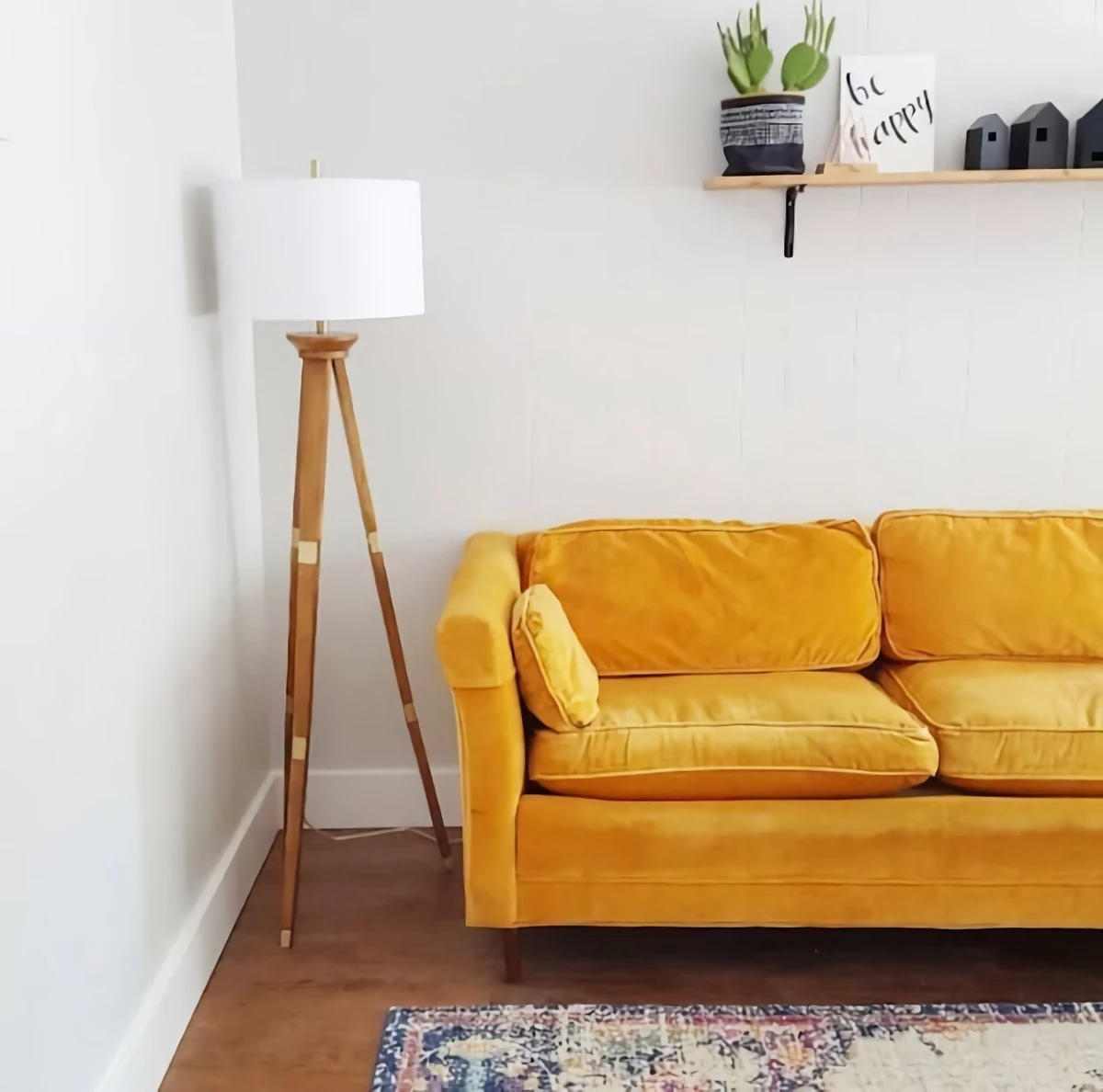
Tackling Oil or Grease Stains
- Cornstarch to the Rescue! Pile a generous amount of cornstarch directly onto the stain. Don’t be shy.
- Let It Sit. Give it at least a few hours (overnight is even better for bad stains) to pull the oil out of the fibers.
- Vacuum and Brush. Vacuum up the powder. If a faint spot remains, go at it with your suede eraser.
Getting Rid of Mud
- Let It Dry. Completely. This is critical. Wiping wet mud will just smear it deeper into the fabric. Be patient.
- Break It Up and Vacuum. Once it’s crusty, gently break up the chunks and vacuum away all the loose dirt.
- Erase the Rest. Use your suede brush and eraser to handle any dusty residue that’s left behind.
Fixing Water Stains
I know this sounds crazy, but the best way to remove a water ring is often with… more water. The goal is to dampen the entire panel evenly so it dries without a new edge.
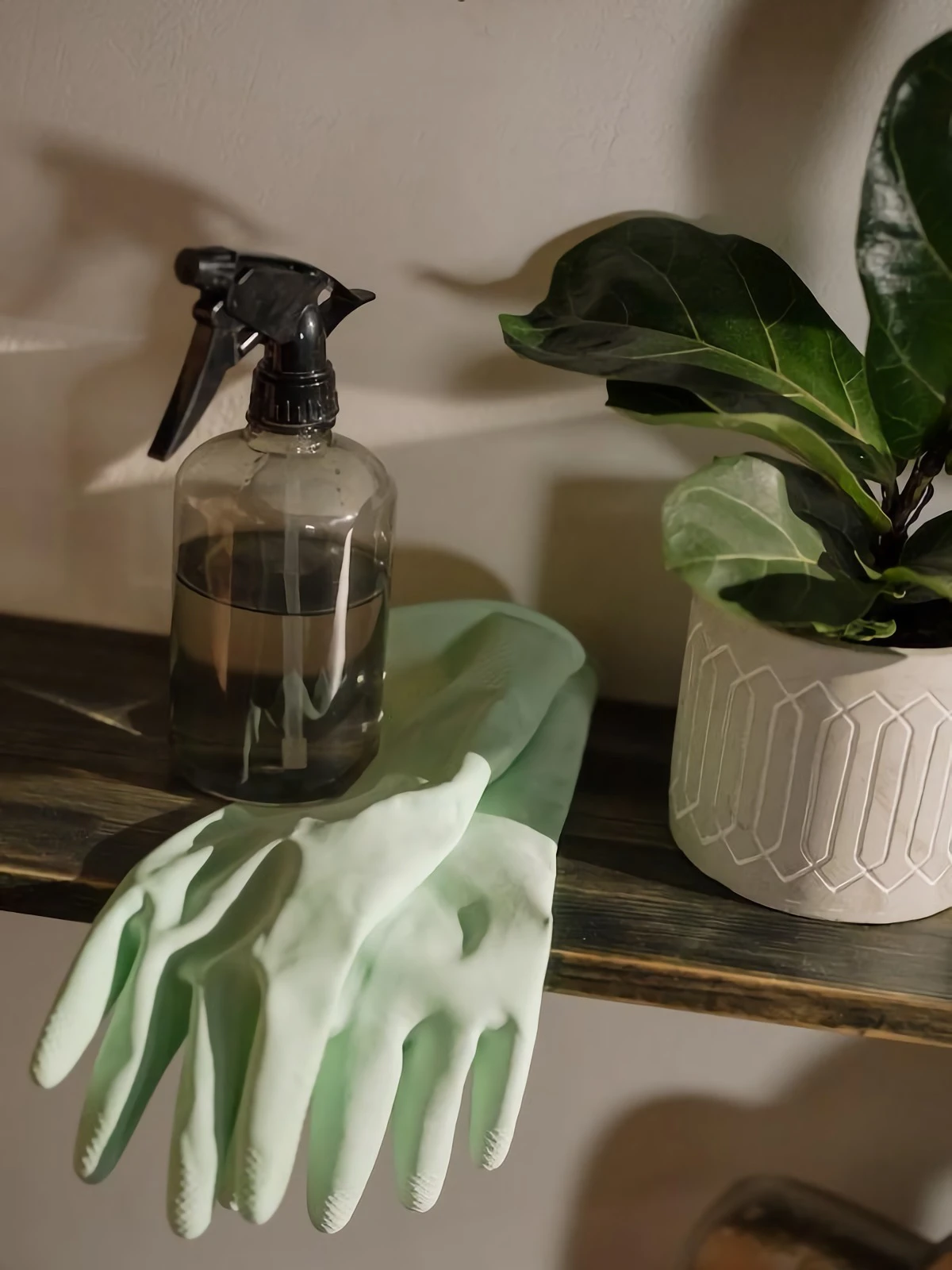
Put distilled water in a spray bottle set to the finest mist. Lightly mist the entire cushion face where the stain is, from seam to seam. The key here is damp, not wet. Think morning dew, not a rain puddle. Hold the spray bottle a good 12 inches away and start light. You can always add more, but you can’t take it away! Immediately blot the whole surface with a dry cloth to blend the moisture, then let it air dry.
Advanced Problems: When to DIY and When to Call for Backup
Some issues are a little trickier. Here’s when you can be a hero and when it’s time to call in a pro.
For Matted or Crushed Nap: This happens in high-traffic spots. Hold a steam iron several inches above the surface (never let it touch!) and give the area a few short bursts of steam. While it’s slightly damp, brush it vigorously with your suede brush to lift the fibers back up. No steam iron? Try this: hang a clean, damp (not dripping!) towel near the matted spot for 20-30 minutes. The humidity will do a similar job of relaxing the fibers before you brush them.
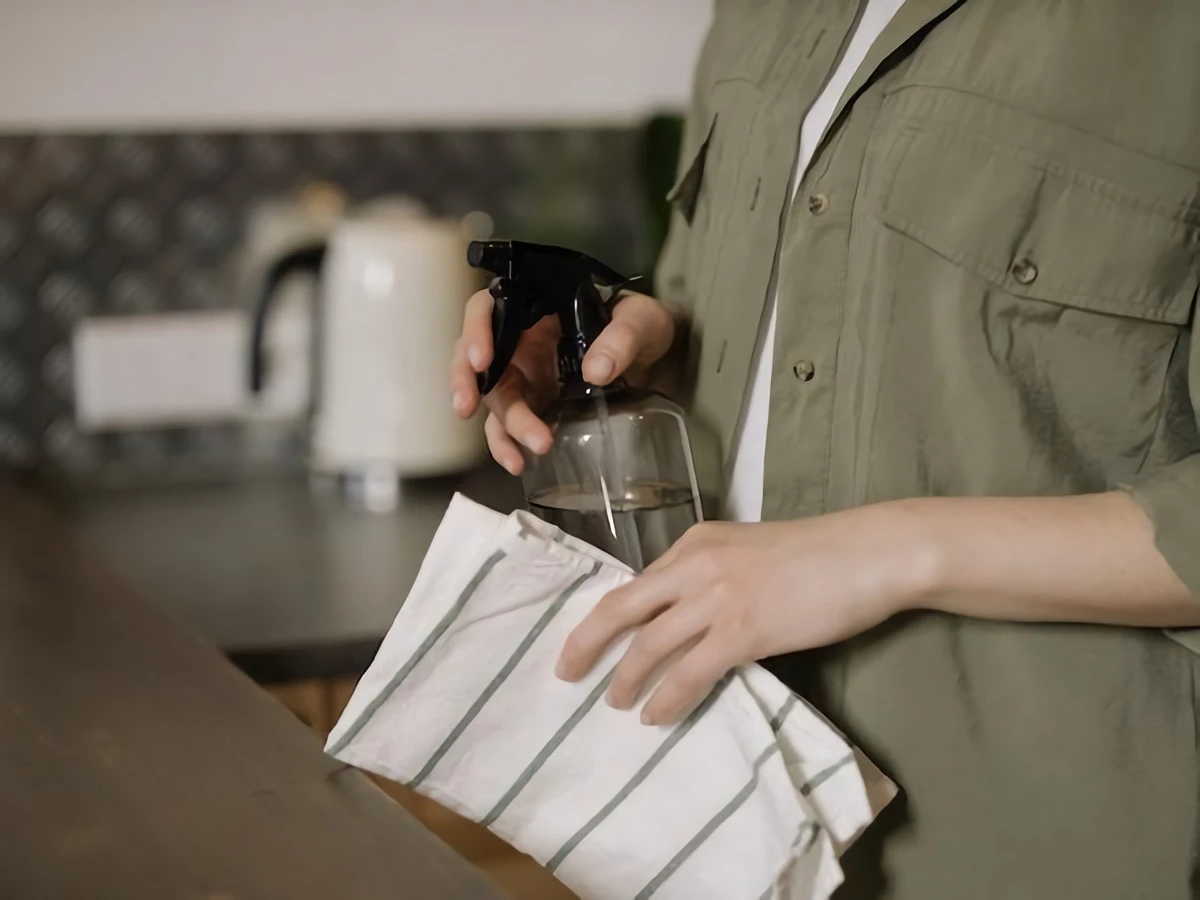
For Ink, Dye, or Mystery Stains: Honestly? Don’t touch them. DIY attempts on things like pen ink or dye transfer from new jeans almost always make it worse. This is when you call a professional. They have specialized kits that might be able to dissolve the stain safely.
When to Hire a Professional Cleaner
Knowing when to call for help is smart, not a sign of failure. A pro visit will likely cost between $150 and $400 depending on the couch size and the level of staining, but it can be worth every penny. Call an insured and certified upholstery specialist if you face:
- Huge stains you can’t identify.
- Ink, paint, or dye transfer stains.
- Widespread water damage or any signs of mildew.
- Pet urine that has soaked into the cushion. The problem here isn’t just the surface; it’s the odor-causing bacteria deep in the foam that requires pro-level equipment to fix.
- You’re just not confident and the risk feels too high.
A suede couch asks for a little more attention, but it’s far from unmanageable. With a bit of consistent care, it will reward you with years of comfort and style.
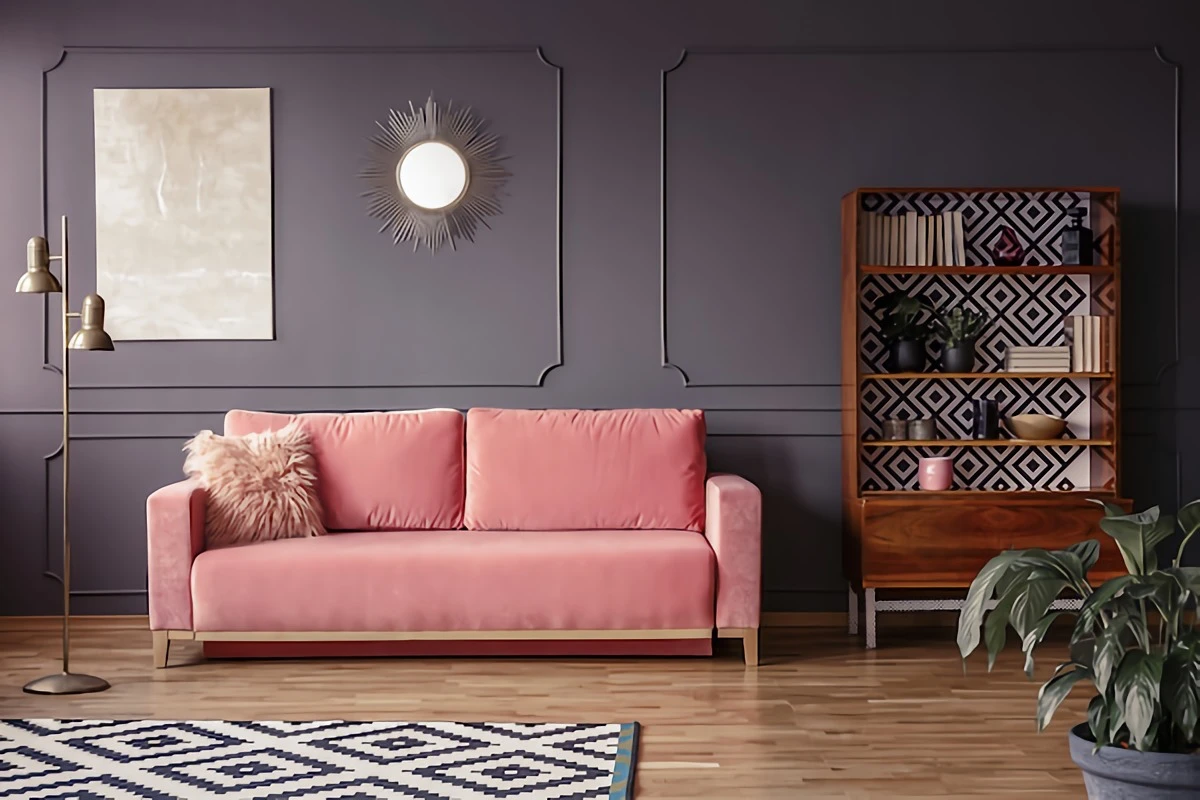
Inspiration:
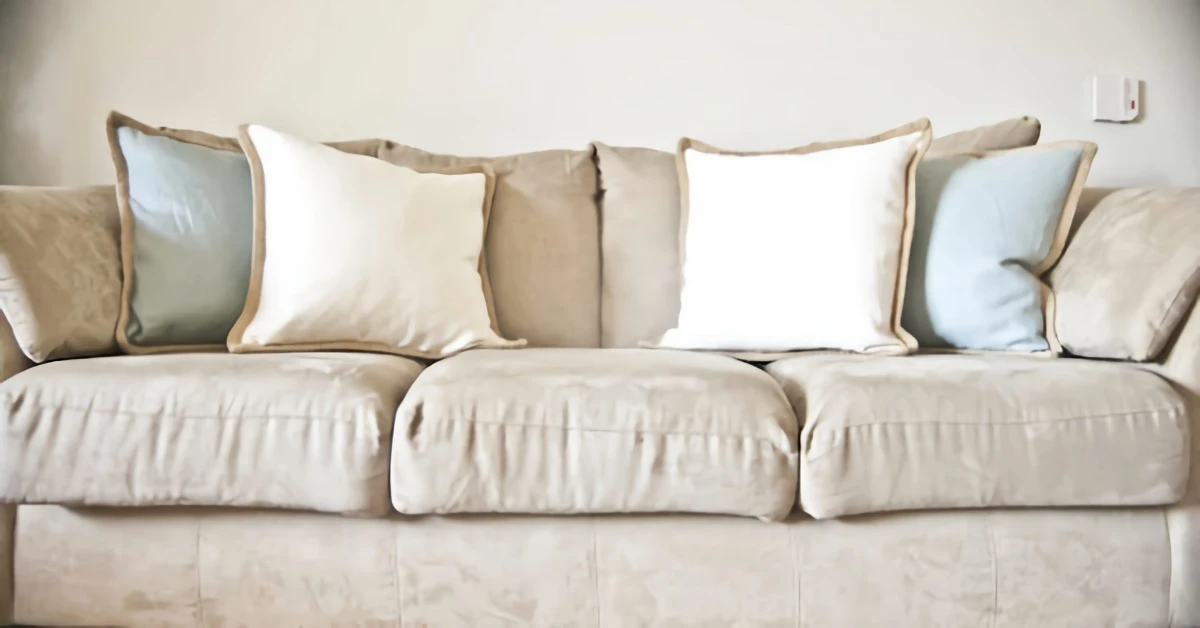
Once you’ve deciphered your couch’s cleaning code, assembling a dedicated care kit is your best defense. Keep these items together, and you’ll be ready to act swiftly and correctly.
- A dual-sided suede brush: The nylon bristle side is for gentle, everyday fluffing to restore the nap, while the brass wire side helps lift stubborn dirt from matted-down areas.
- A suede eraser: This small, rubber-like block is a miracle worker on dry stains and scuffs. It crumbles as it lifts the mark, working without any liquids.
- A code-appropriate cleaner: For ‘S’ code natural suede, a specialized solvent cleaner like Chemical Guys Foaming Fabric & Upholstery Cleaner is a trusted option. For ‘W’ code microsuede, a specific upholstery shampoo is best.
- White microfiber cloths: Using white cloths is a non-negotiable pro-tip. It completely eliminates the risk of dye transfer from the cloth to your couch during cleaning.


